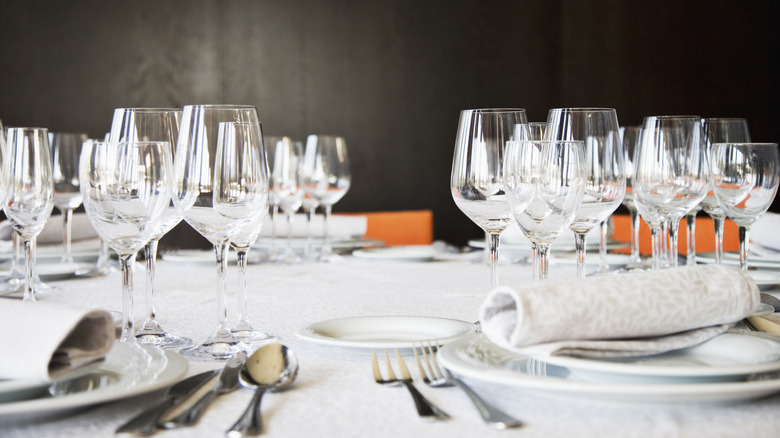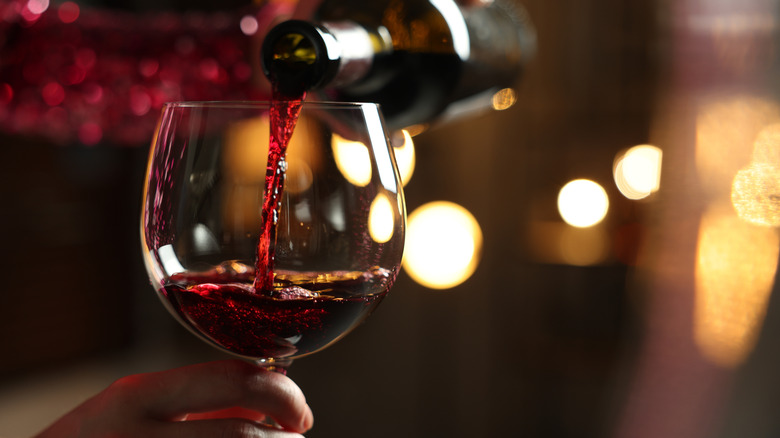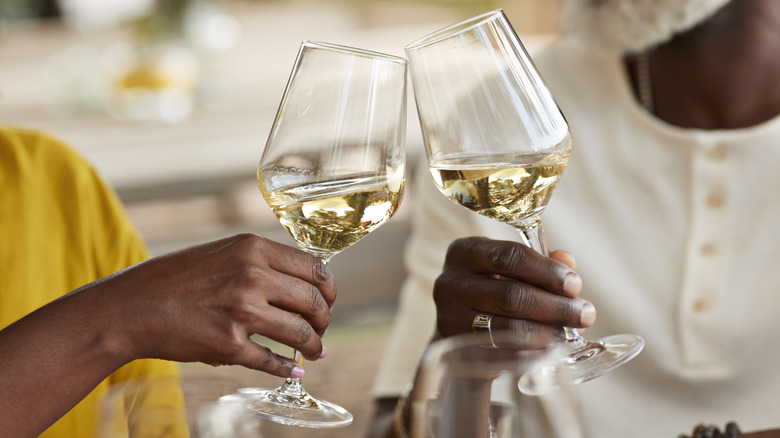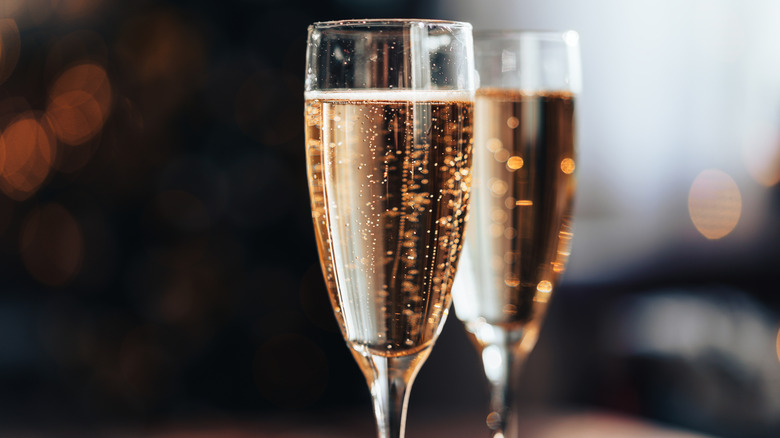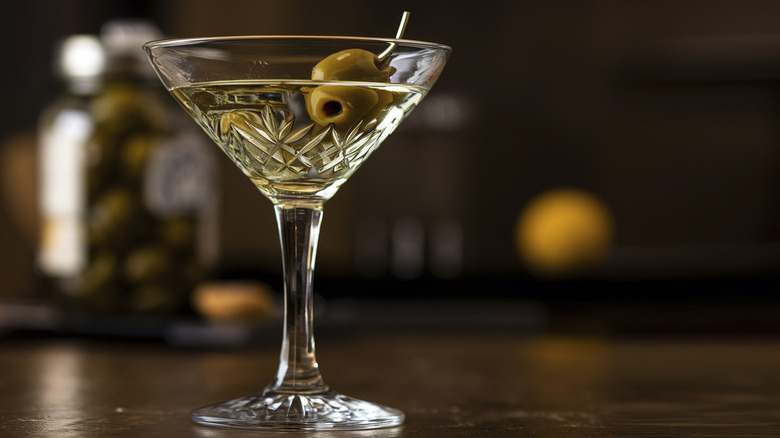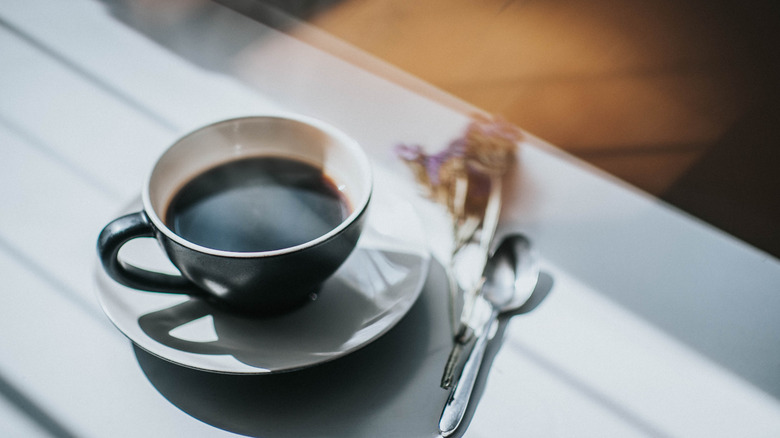How To Properly Hold Different Types Of Glassware At A Fine Dining Restaurant
We may receive a commission on purchases made from links.
When it comes to fine dining, there are numerous etiquette rules, including some you may not realize you're breaking. From properly passing the salt to keeping your elbows off the table, it can be a lot to keep track of — and you might even be holding your glass wrong. To ensure we know exactly how to handle our drinks at a fancy establishment, Food Republic spoke to Nikesha Tannehill Tyson, an etiquette expert at The Swann School of Protocol Shreveport and one of the authors of "Going Public: Culture, Custom, and Class for Social Success."
When it comes to proper drinking procedures at a high-end restaurant, Tyson shared some tips to keep in mind no matter what glass you're holding. Taking small sips of your beverage will help you maintain a steady pace, allowing you to engage in conversation and enjoy your meal without overindulging. Tyson emphasizes, "The way you drink should be as graceful as the setting!" She also reminds lipstick wearers to sip from the same spot on the glass each time to avoid smudging lipstick all over the rim. One lipstick mark is acceptable, but a ring of pigment around the glass will only get messier with each sip.
Once you've mastered these general drinking habits, you can move on to more intricate etiquette rules, like properly handling glassware. Tyson outlined exactly how to hold different types of glasses in a fine dining setting, and spoiler alert: the specifics depend on what you're drinking.
Red wine glasses
Most wine drinkers are unsure whether to hold the stem or the bowl of a wine glass. When it comes to red wine, you can hold the wide-brimmed glass by either, but glassware expert Nikesha Tannehill Tyson tells Food Republic that you want to avoid handling your wine glass too often by the bowl. This is because the heat from your hands may warm up your wine.
You should be especially wary when drinking red wine, which is often served at room temperature. Any additional temperature changes to your beverage may drastically alter your drinking experience. If you absolutely need to get a good grip on your wine glass for proper swirling and aerating, be sure to stay toward the base of the bowl.
White and rosé wine glasses
Whether you are team white or team rosé, odds are you want your wine as chilly as possible. To keep your drink at the ideal temperature, you should try not to handle your glass by the bowl at all.
Holding the wine glass by the stem is really the only proper way to indulge in a lighter-colored wine to ensure it stays cold. Keeping this in mind, you might want to avoid using a stemless wine glass for your chilled rosés and white wines while you're entertaining, or you'll risk altering the drink's temperature.
Champagne flutes
When it's time to break out the bubbly, don't make the mistake of improperly handling your Champagne flute. Champagne is a chilled beverage that can also be easily altered by the temperature from your fingers, so try to stay towards the stem of your glass as much as possible.
There is, however, some controversy surrounding the use of Champagne flutes. The tall and slender glasses are often used when pouring the celebratory beverage because their shape preserves the sparkling wine's carbonation. However, the lack of space present within the glass doesn't allow for much swirling, which may detract from your overall drinking experience. Don't be surprised if a fine dining restaurant opts to serve your Champagne in a regular wine glass. No matter what glass your Champagne comes in, be sure to hold it by the stem.
Martini glasses
There's no denying that sipping a drink out of a martini glass can immediately make you feel chic and sophisticated, but this cool persona may quickly fizzle if you don't handle the glass in the right way. Contrary to popular belief, you should not be straining your fingers to fit the entire martini glass in your hand while you drink. Holding the wide-brimmed glass by the stem will keep your martini cool, whether it's shaken or stirred.
If your cocktail comes with an edible garnish like an olive or an onion, you'll either want to eat it before you take your first sip or after you finish your drink altogether. This way, you avoid rooting around in your beverage to grab hold of the garnish stick. Never stick your finger directly in your drink to fish out a bite to eat while at a fine dining restaurant, or you risk a few sideways glances looking your way.
Tea and coffee cups
How you hold a cup of tea or coffee at a fine dining restaurant should look and feel a little bit different from how you handle your favorite mug at home. You might also be served your warm beverage in a cup that you aren't as familiar with, like a teacup or a demitasse cup, which often has a thinner handle and a smaller bowl than typical coffee mugs.
To navigate this style of glass, etiquette expert Nikesha Tannehill Tyson instructs, "Hold the handle with your thumb and index finger, with your middle finger supporting underneath if needed." She also advises against hooking your finger through the handle, as this may communicate a more casual attitude that is not appropriate for a fine dining environment.

